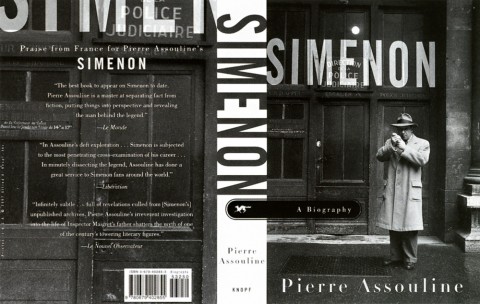Pub Psychology — Archie Ferguson, formerly of Knopf and now art director at HarperCollins, interviewed at the CoveredUp blog:
Publishing has always seemed a lot more glamorous than it is. And if it ever was glamorous, those days are long, long gone. These days I spend a lot of time answering emails – not phone calls – from far and wide, running up and down the stairs… doing damage-control, and feeling more like I’m a psychologist as much as anything else.
Virtual City — Jonathan Lethem, author of Chronic City, interviewed in The New Statesman:
Manhattan, the great secular-commercial metropolis, the world’s first and greatest city founded on concepts other than religious or national identity – and therefore a kind of science-fiction city, a conceptual project, a place unnaturally subject to the distorting forces of capital, ideology, projection, wish-fulfilment and so on – has become…a place both persistently real and unreal. Or, an unreal place where real people are living out their existence… What’s gone wrong and right in this place has a special amount to tell us.
The difference between Time Roman and Times New Roman — Because I know you’re curious.
The Form of a Book — Another lovely, insightful post from A Working Library:
On the page, the rhythm of the text emerges from both the macro design—the pleasing shape of the page, the proper amount of thumb space—and the micro—the right amount of leading, the evenness of the word spacing, the correct break of a line. On the screen, the rhythm of a text encompasses all of these things and more—the placement of a link, the shift from text to video and back again, the movement from one text to another. The rhythm becomes more complex as the orchestra gets larger, but the desire for rhythm does not subside.
In order to create this rhythm, the book must be designed and composed for the screen. A beautiful digital text can no more be arrived at by “converting” from a print design than a beautiful print book can be created by converting a Word file. The digital book will never come into its own so long as it is treated as a byproduct, unworthy of attention.


Nice miscellany.
Re: Manhattan as an unreal place. I’m wondering how this compares to Petersburg, which was dubbed by the Underground Man (via Dostoevsky) as the “most abstract and intentional city,” and by a score of other Russian authors and thinkers as the “unreal” (including Pushkin, Gogol, Bely, Blok, Akhmatova). I guess I’m just wondering, what’s sets Manhattan apart in terms of its unreality?
Obviously I can’t speak for Jonathan Lethem, but I think his point is that Manhattan is unique because it is a city built purely on commerce, not religion or national identity. I’m not sure I entirely agree, because I suspect you could make a similar case about London… Anyway, I think you are right to suggest other cities have “unreal” qualities about them too. London, Paris, Venice, (St. Petersburg?) et al exist as much in people’s minds as they do in the world.